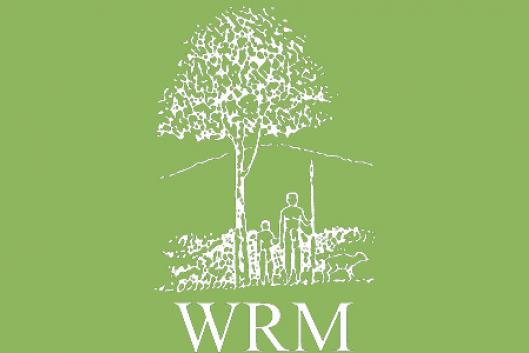Forestry companies worldwide are enthusiastically trying to implement the idea of establishing tree plantations in Southern countries under the Clean Development Mechanisms of the Kyoto Protocol, signed in 1997, allegedly as a way of sequestering CO2 from the atmosphere to mitigate the effects of global warming ... and of making good profits at the same time. Even if presented as "environmentally friendly", the whole idea of plantations as carbon sinks is based on weak scientific arguments and does not constitute an effective way of reducing CO2 concentrations in the air. Additionally, it enhances the detrimental effects of the hegemonic tree monoculture scheme at the local and regional levels.
Norway has also got on the bandwagon and has set its sights on Uganda. The Norwegian company Tree Farms established itself there in 1996, and has one afforestation project in progress. Additionally, the Norwegian Afforestation Group got the authorities' agreement on a project in November 1999. The former -which operates in the Bukaleba Reserve area under its subsidiary's name Busoga Forestry Company Ltd.- has already started a project to set up between 80,000 and 100,000 hectares of plantations of pines (P. caribaea, P. oocarpa and P. tecunumani) and eucalyptus (E. grandis). Such scheme is very similar to that adopted by the Dutch foundation FACE in the Ecuadorian Paramos (see "Dutch carbon sink plantations: adding to the problem") and so are its consequences.
A recent research in the field performed by the Norwegian NGO NorWatch shows that both projects -and particularly the one of Tree Farms- have some very questionable aspects: both Norwegian companies have leased their land from the authorities for a bargain price, since on the one hand Ugandan authorities have virtually no capacity to assess what value the companies plan to generate, particularly through carbon trading, and on the other hand, corruption is present at the decision making level.
The Tree Farms project has provoked the eviction of some 8,000 people from 13 villages -mainly farmers and fisherfolk- from their lands, that the company is now occupying, condemning them to poverty due to the loss of their livelihoods, and creating a source of social and environmental conflicts. Moreover, under the "taungya" system, local dwellers are allowed to grow maize, beans, and other vegetables between the rows of planted trees during the first few years, but, surprising as it may seem, they have to pay for this land use and, additionally, they are being exploited by the company since their weeding and managing of trees during these first years is not paid.
By leasing out areas for "carbon plantations" during periods of 50 years, the country is giving away the option of changing land use in the future. The so called carbon-storing plantations have to remain as such for the foreseeable future, depriving the country's authorities of the choice of using the areas for other purposes in the peoples' interest. Additionally, Uganda will not be allowed to use these carbon sinks for its own carbon accounts when the country itself faces commitments, because the credits will already have been sold to Northern countries and companies in the rich countries.
As is usually happening, the carbon account in the Tree Farms' project is uncertain, since there is no way of establishing the net amount of CO2 that could be removed and stored by tree plantations during long periods. It is even possible that they become carbon sources instead of sinks. Additionally, plantations face risks posed by fires, political unrest, and upheavals, which are factors that make it hard to guarantee that the activities will be allowed to continue without obstacles. Not to mention the impact of tree monocultures on soils, water and biodiversity, including the ability of the understorey and surrounding vegetation to remove and store CO2.
It is unclear whether the Tree Farms project will survive, because of social conflicts and problems with profitability. A recent EU-financed study, covering among others the mentioned Tree Farms project, concluded that there would be a "loss-loss" situation both for forestry and the local people". NorWatch has got the view that the Tree Farms project is really a "loss-loss-loss" situation: forestry is ailing, local people are suffering, and Uganda is being "CO2lonized".
In relation to the Climate Change Convention process, the Conference of the Parties will discuss -when it meets in The Hague next November- whether carbon trading based on tree plantations in Southern countries should be approved as an option to emissions reduction. In the meantime Norway, that in 1997 made the commitment that its greenhouse gas emissions for the period 2008-2012 would decrease, has actually increased them. Norwegian authorities predict that this growth will continue until 2010. For Norway, planting trees in a Southern country such as Uganda is cheaper than implementing technologies that would lead to a decrease in its own emissions. Local Ugandan poor and the global environment will pay for the costs.
Sources: Article based on information from: "CO2lonialism. Norwegian Tree Plantations, Carbon Credits and Land Use Conflicts in Uganda" by Harald Eraker, NorWatch, April 2000; The Republic of Uganda, Country Report on Assessment of the Intergovernment Panel on Forest Proposals, The Forest Department, June 1998.
